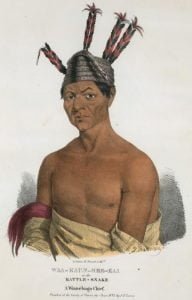The Winnebago tribe is the fourth group of the great Siouan, or Dakota, family. The Wninebagoes were styled by the Sioux, Hotanke, or the “big-voiced people;” by the Chippewas, Winipig, or “filthy water;” by the Sauks and Foxes, Winipyagohagi, or “people of the filthy water.” Allouez spells the name Ovenibigouts. The French frequently called them Puans, or Puants, names often roughly translated Stinkards. The Iowas called them Ochungaraw. They called themselves Ochungurah, or Hotcangara. Dr. J. O. Dorsey, the distinguished authority on the Siouan tribes, states that the Siouan root, “changa,” or “hanga,” signifies “first, foremost, original or ancestral.” Thus … Read more



